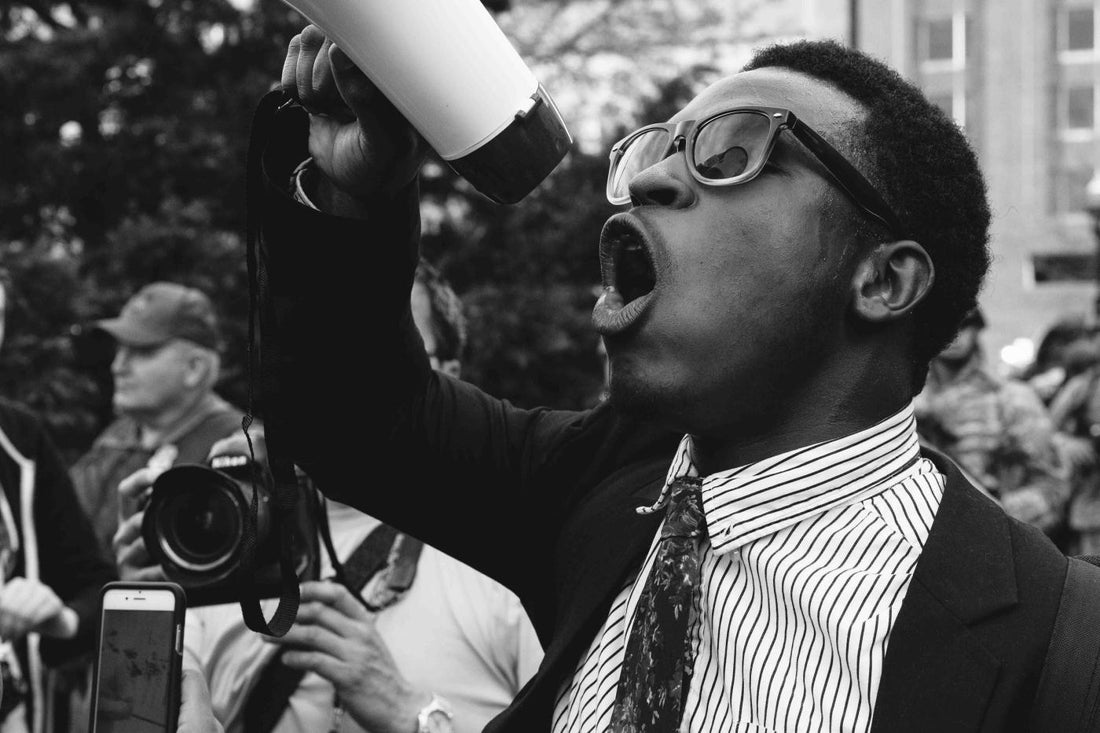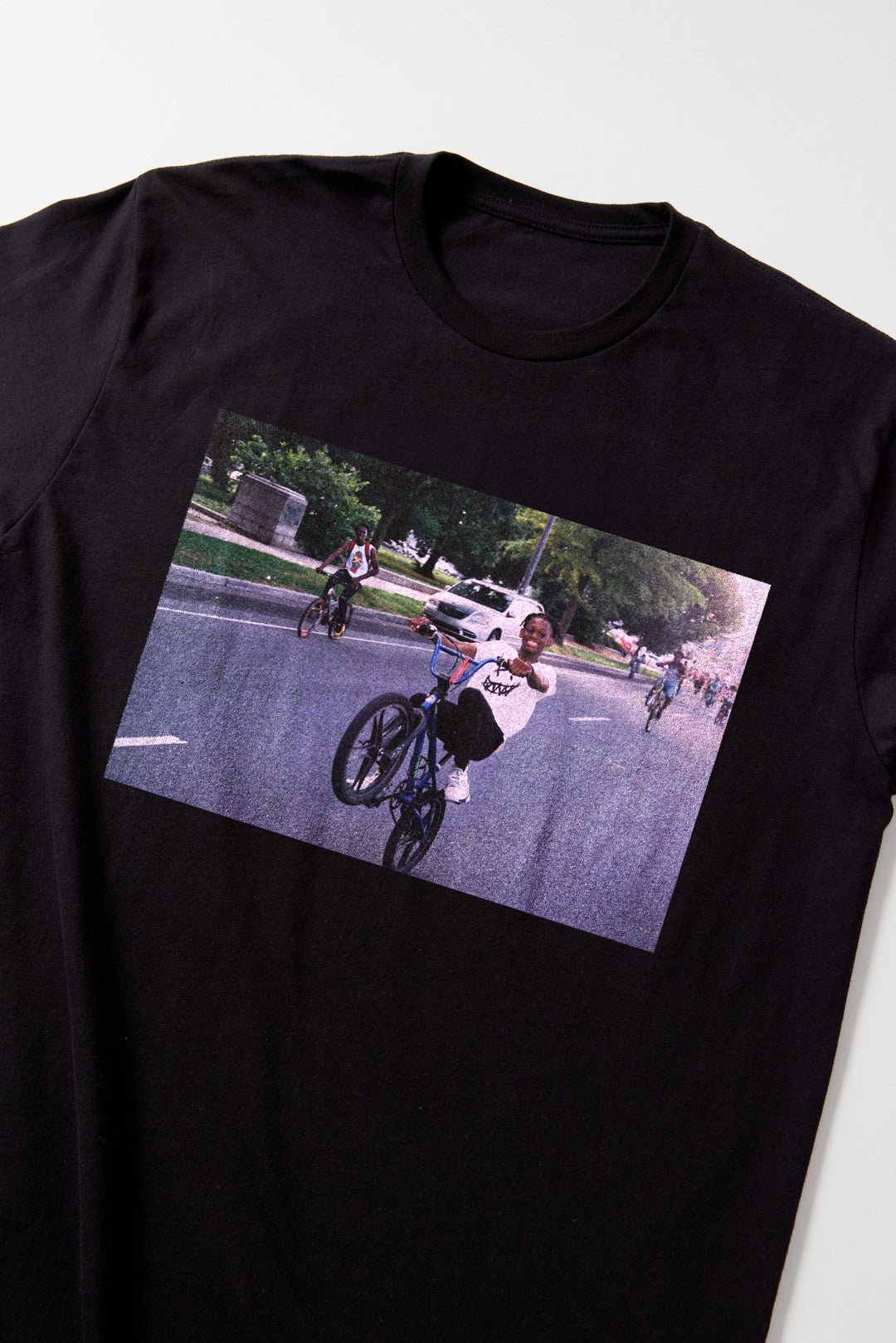
The Telling of Black Stories: The Importance of Controlling Our Own Narratives
WORDS & PHOTOGRAPHY: GIONCARLO VALENTINE
“Silencing is a kind of killing. I suppose that’s the whole point, especially if the killers are threatened by your work.”
— Venus Thrash
For years I’ve struggled with a feeling of discomfort around the subject of non-Black photojournalists creating work that centers Black people’s experiences of poverty and trauma.
I believe that we need to explicate the effect of large, reputable publications as well as independent photojournalists continuously telling/exploiting Black stories/Black pain for white audiences and profit. How does this one-way street affect the career trajectory of aspiring Black photojournalists? And most importantly, what effect does this have on the Black experience as a whole? I’m a working photographer with my sights set on photojournalism. Like many Black photographers, I’m working independently with little support in the early stages of my photojournalistic journey. I am reminded of the obstacles my Black peers and I are up against whenever I pick up a publication or whenever I look through the winners of photographic grants and residencies. It seems that the vast majority of the photojournalistic work published and supported today is dominated by whiteness.
Dana Lixenberg’s “Imperial Courts” project is a 22-year culmination of work documenting the strategic isolation, living conditions, and sense of community found in a small housing project in a neighborhood of Watts, Los Angeles; the images are unquestionably salient and moving. The project stands out as a brilliantly rendered example of how far long form projects should go to tell a story in the age of technology. The project also adds to the larger problem of Black exploitation. In some of the videos that capture the everyday lives of the housing project’s residents, there is a slimy and uncomfortable feeling of voyeurism. The imagery often feels distant, more like surveillance than genuine interaction, as if Blackness is on display; as if to say, “look at how they live” or “they’re just like you and me.” Lixenberg explains, “The project aims to build an online historiography of which the residents are both protagonists and co-authors.” This is admirable. I am however curious about whether or not it is incumbent on Lixenberg to send some of the project's profits back into the Watts community she photographed, instead of sending them gold-lettered copies of the book.
Projects that use Black people as subject matter but fail to properly compensate them are not unusual. Paris is Burning, the legendary documentary film by Jennie Livingston that illuminated and by some accounts, exploited the underground LGBTQ Black and Latinx ballroom community is but one example. It was only after the threat of a lawsuit that the participants of the film received a portion of the film’s profits, albeit a meager one.
Many white photojournalists have cultivated long lasting careers on the backs of Black people.
Stephen Shames made a name and a career for himself by his unfettered access to The Black Panther Party. Some of the most influential images that exist of Huey P. Newton and Bobby Seale were taken by Shames, a white man. He managed to have a successful career well after the Black Panther Party was dismantled by white supremacy, many of its members jailed or murdered. During the 2014 Unrest in Ferguson, in the wake of Mike Brown’s murder, Photographer Robert Cohen captured an image of a man, Edward Crawford catching and throwing back a tear gas canister. This image won Cohen a Pulitzer prize, while Crawford faced criminal charges and was later found murdered in his car. Many of Robert Mapplethorpe's most famous works subjected Black men to seemingly blatant fetishization and he is thought of by many as an artistic luminary. Pieter Hugo produced a collaboration with Hood by Air that was one of the most inexplicably exploitative projects that I’ve seen. The collaboration features Jamaican porn stars and homeless LGBT folks from the Gully. When this project came out it was lauded by the likes of Hypebeast, Vogue, and Dazed. Just last month E. Jason Wambsgans, a white photographer, won a Pulitzer Prize in photography for his story about gun violence in Chicago, centering a Black child who was a victim of the aforementioned violence.
Is the quality and beauty of an image more important than the photographer and their intentions? Many of the aforementioned photographers have made technically beautiful, evocative bodies of work. But, does that discount the common theme that their whiteness allowed them access to these Black bodies and helped their work to reach these heights? It is easier to access poor and disenfranchised communities of color as fodder for storytelling. Growing up in Baltimore I saw this often in television shows like The Wire and The Corner. When the 2015 Uprising took place in Baltimore, there were white photographers and photojournalists teeming across the area. The authority, access, and security that they felt is a part of a very complex problem. And although Devin Allen, an emerging Black photojournalist from Baltimore, was hailed for his image making during the Uprising and even landed a captivating cover of TIME magazine, the majority of the imagery and narratives coming out of Baltimore were from the white perspective, and anything but local.
Allowing mostly non-Black, particularly white, photographers to tell our stories under the guise of photojournalism is a racially insensitive act of erasure.
When we allow this we are signing away a great deal more than the rights to our image. Participating in this decentralizes our narratives, allows white people and non-Black people to continue to dominate the photojournalistic landscape, and takes the voice and opportunity from us to tell our own stories. There are too many Black photojournalists of varying experiences and educational backgrounds that would love the opportunity to tell their stories and have a reputable platform to do so. Outside of the issue of exploitation within photojournalism is the equally important issue of inclusivity.
The exclusion of Black photographers from the landscape of photojournalism feels intentional. An example of this can be found in The New York Times. Every year The NYT does a Year in Pictures feature, a collection of the best photographs taken from around the world that year. For the 2016 Year in Pictures, 145 images were selected to represent the best of the best, only one of them was captured by a Black person, Diamond Reynolds. And her image was taken from a video captured on Facebook Live of her Boyfriend, Philando Castile being murdered (The NYT even went so far as to misspell his name). This list was compiled by a group of 7, none of them Black. Many of the images centered Black tragedy, none of them captured by a Black person. National Geographic is another example. For its Best Photos of 2016 list, National Geographic’s website boasts that it, “Curated from 91 photographers, 107 stories, and 2,290,225 photographs.” Unfortunately, it only ended up selecting 1 Black photojournalist, Wayne Lawrence. Time magazine followed this trend as well. Of 100 images published for their 2016 Top 100 Photos of the year list, there were two Black photojournalists included, Ruddy Roye and Wayne Lawrence.
I’ve heard the critique that Black photographers and creatives should create their own spaces and divest their talents from white-owned publications.
This is valid and important. Many incredibly talented Black folks have gone on to create their own photographic publications to celebrate their visions and tell our stories with grace and perspective. Akintola Hanif and his publication Hycide, Lawrence Burney and his publication True Laurels, Dana Scruggs and her publication Scruggs Magazine, as well as The Tenth Zine started by Kyle Banks, André Verdun Jones, and Khary Septh come to mind. Against the odds, these folks and many others have created spaces that center Black people from a Black perspective. But with many emerging, Black-owned publications, funding, reach, and support is often fleeting and unreliable. It also takes a substantial amount of time to develop the reputation that publications like TIME, The New York Times, National Geographic, etc have crafted over many decades. Photographic grants, endowments, fellowships, residencies, educational opportunities, and membership’s for Black people are limited and difficult to attain, especially compared to our white counterparts.
I am uncomfortable. We should all be uncomfortable. When we broaden the scope and look at how the images of Black people in the media have shaped and defended the mistreatment of Black people in our societies, I think we can find a direct culprit in media framing. How different would the Imperial Courts project have been had it been photographed and filmed by a resident of the community? How much more powerful? Who would have published it then? Would it have the media reach and support? Would it rally attention and measurable influence around the issue of public housing, systemic oppression, and violence and crime in our communities due to generational poverty? Will we ever see the reverse of this problem, poor Black documentarians trying to tell the stories of white communities of wealth and insulation? We never receive that access or authority to enter their spaces, and we can imagine the unfortunate outcome if we did. What do representation and inclusivity look like in an industry that commodifies Black trauma and Black bodies, but rarely ever allows them control of their own stories?
Apathy and indifference toward making your platform inclusive is a form of silencing and in the process, a covert violence is being done.
If your masthead, your board meetings, your roster of staff photographers feature no Black faces you are working daily to keep Black photojournalists and Black people out. It is on Black photojournalists and artists to create these spaces, and it is on all of us to fund and support them. We are the only ones who can tell our stories with the gravity, dignity, and understanding they deserve.

